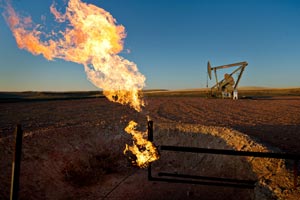Oil Climbs to 10-Month High as US Crude Stockpiles Decline

Oil rose to the highest level in more than 10 months in New York as government data showed U.S. crude supplies declined, reducing a glut.
Crude stockpiles dropped by 3.23 million barrels, according to the U.S. Energy Information Administration, in line with analysts’ projections in a Bloomberg News survey.
Futures briefly reversed direction after the report showed unexpected gains in inventories of gasoline and distillate fuel, a category that includes diesel and heating oil. An upsurge of unrest in Nigeria also buoyed crude prices.
"Our expectation is that inventories will continue to draw," said Cavan Yie, senior equity analyst at Manulife Asset Management Ltd. in Toronto. "We expect supply and demand to come closer into balance, which will result in higher oil prices through the end of the year."
Oil has surged more than 90% from a 12-year low in February amid unplanned disruptions and a steady slide in output from the United States, which is under pressure from the Organization of Petroleum Exporting Countries’ policy of pumping without limits.
Nationwide crude supplies fell to 532.5 million barrels in the week ended June 3, according to EIA. Stockpiles reached an 87-year high of 543.4 million barrels in the last week of April. Analysts had projected a 3 million-barrel decline for last week.
Crude stockpiles at Cushing, Oklahoma, the delivery point for WTI and the nation’s biggest oil-storage hub, dropped by 1.36 million barrels.
WTI will find it "very difficult" to exceed $55, Dennis Gartman, an economist and editor of the Suffolk, Virginia-based Gartman Letter, said on "Bloomberg Surveillance." Prices at that level would spur increased U.S. output, he said.
Crude production increased by 10,000 barrels a day to 8.75 million, the first gain in 13 weeks, EIA data show. The number of active oil rigs in the United States increased by nine to 325 last week, only the second gain this year, according to data compiled by Baker Hughes Inc. Despite the one-week uptick in output, U.S. crude production still is still well below last year’s peak, and explorers have idled more than 1,000 oil rigs since the start of last year.
"Production is down big and will only decline further given where the rig count is," said Matt Sallee, who helps manage $14.1 billion in oil-related assets at Tortoise Capital Advisors in Leawood, Kansas. "The rig count is too low to maintain production."
Refineries bolstered operating rates by 1.1 percentage point to 90.9% of capacity, the highest in two months. U.S. refiners typically boost utilization in May and June as they prepare for the summer peak driving season.
Gasoline supplies rose 1.01 million barrels, while stockpiles of distillate fuel grew 1.75 million barrels, the first gain in eight weeks.
July gasoline futures climbed 0.8% to $1.599 a gallon. Diesel for July delivery rose 1.6% to $1.5667 after touching $1.5727, the highest since Nov. 4.
Oil producers in Nigeria are facing a renewed wave of violence in the delta region that accounts for most of the country’s crude. Nigeria’s output dropped to the lowest in almost three decades as armed groups intensified attacks to rupture pipelines in recent months. Total volume of crude shut due to the attacks range from 700,000 to 800,000 barrels per day, according to the state-owned Nigerian National Petroleum Corp.
Oil-market news:
• Repairs are being carried out at two different sites on the Forcados export pipeline operated by Shell in Nigeria, which was hit by explosions in February and again last week, according to a person familiar with the situation, who asked not to be named because of security concerns.
• U.S. gasoline demand will average a record 9.5 million barrels a day during the second and third quarters, up from 9.48 million forecast in May, EIA said in its monthly Short-Term Energy Outlook on June 7.
• China imported 32.24 million metric tons of crude in May, according to data from the General Administration of Customs. That’s equivalent to 7.62 million barrels a day, down 4.3% from the previous month and the lowest since January.


